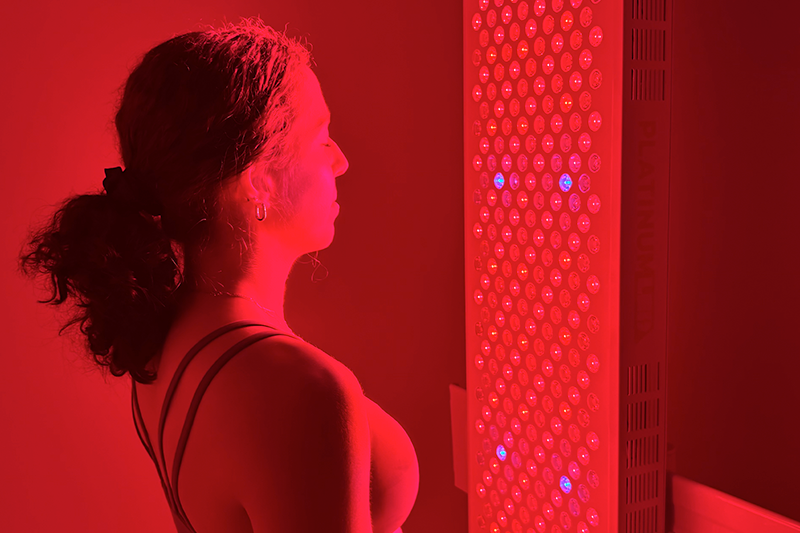Red Light Therapy

Red light therapy has shown promising benefits for nervous system health and overall wellness. One of its key effects is its ability to promote cellular energy production in neurons, which can enhance neural function and communication. This can lead to improved cognitive performance, including enhanced focus, memory, and mental clarity. Red light therapy's neuroprotective properties also make it a potential therapy for neurodegenerative conditions, helping to support brain health and reduce the risk of cognitive decline.
Additionally, red light therapy has therapeutic effects on muscle recovery and pain relief. The red light wavelengths penetrate deeply into the skin and underlying tissues, stimulating cellular energy production (ATP) and reducing oxidative stress. This can accelerate muscle repair, reduce inflammation, and alleviate muscle soreness after intense workouts or injuries. Red light therapy is also used to manage chronic pain conditions such as arthritis, fibromyalgia, and back pain, offering a non-pharmacological approach to pain management.
Furthermore, red light therapy has a calming effect on the nervous system, helping to reduce stress and anxiety levels. The exposure to red light wavelengths stimulates the production of serotonin, a neurotransmitter associated with feelings of relaxation and well-being. This can have a positive impact on mood regulation and overall mental health. By reducing inflammation in the nervous system, red light therapy also contributes to a more balanced immune response and improved overall wellness.
Incorporating red light therapy into a wellness routine can offer a holistic approach to supporting nervous system health and promoting overall well-being. Its non-invasive nature, along with its potential to address a range of physical, neurological, and mental health concerns, makes red light therapy a valuable tool for individuals looking to optimize their neurological function and achieve a greater sense of vitality.




